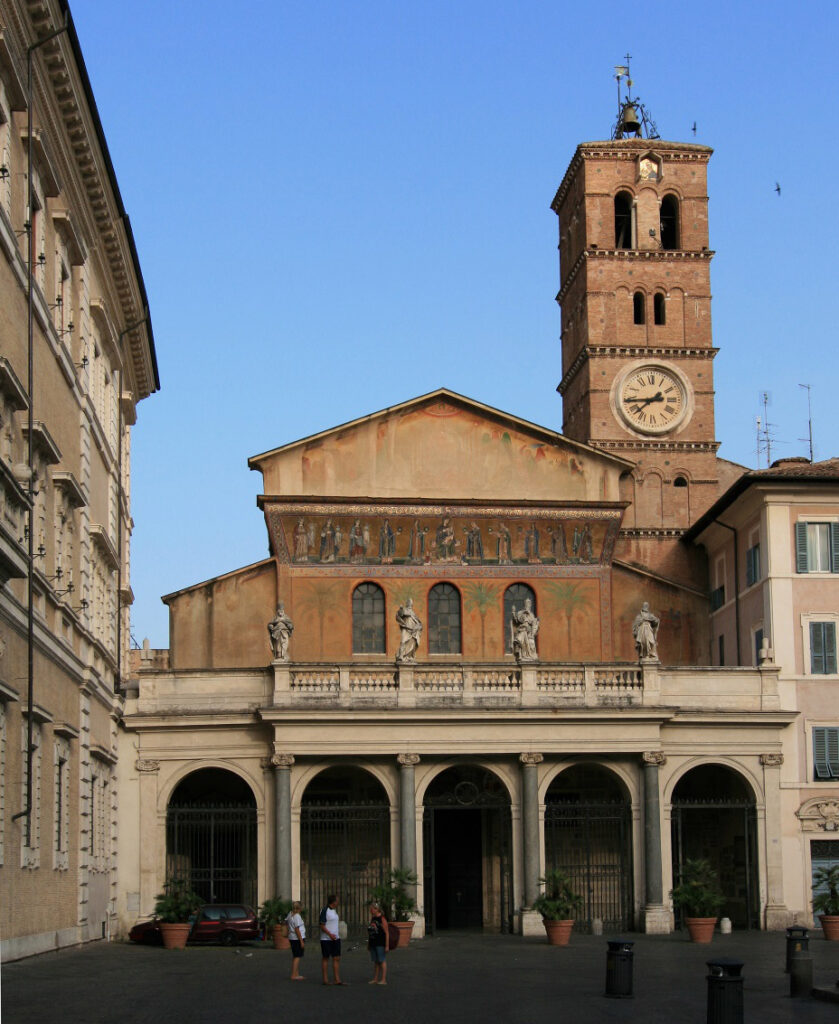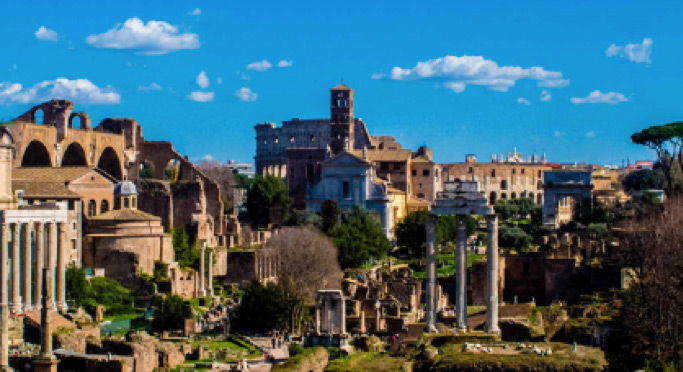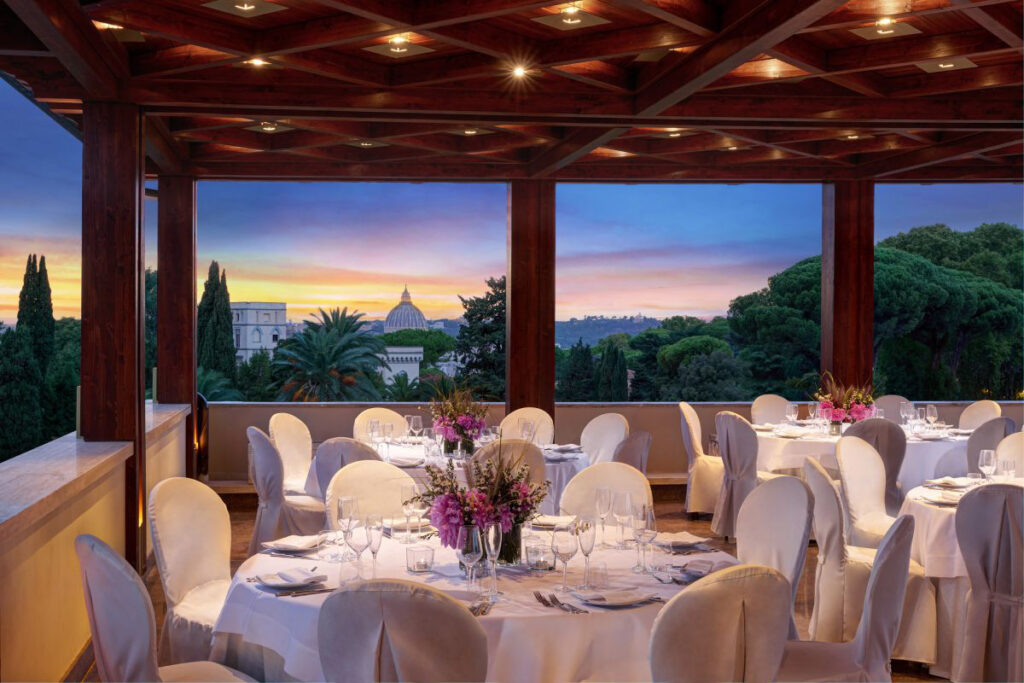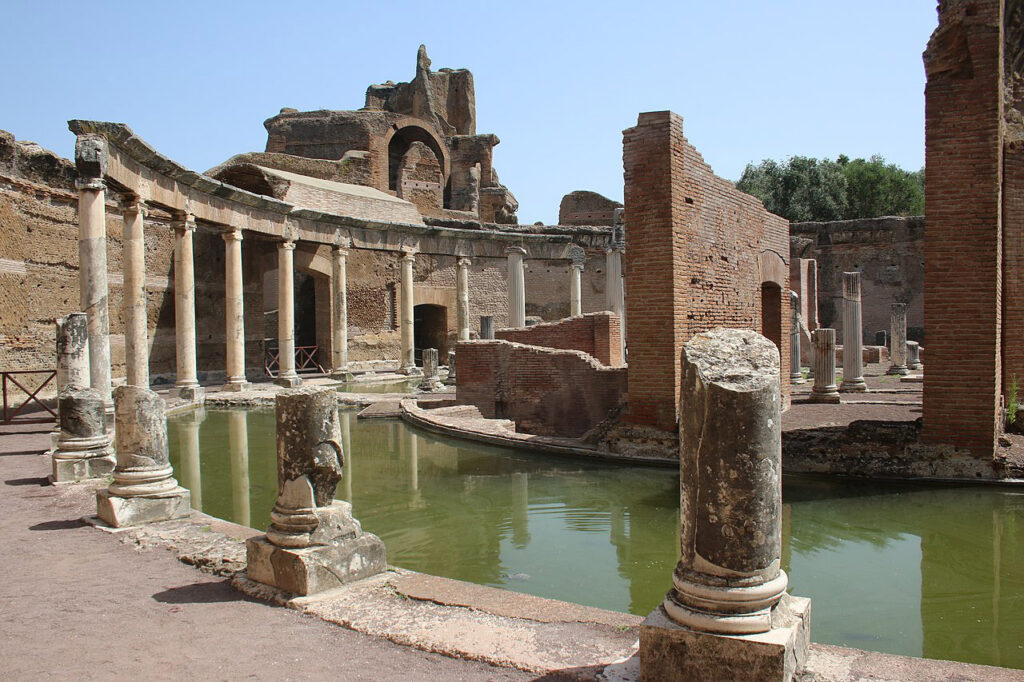Tour of Saint Basilica di Trastevere.
Monday 10th July (evening).
This is one of the oldest churches in Rome. The basic floor plan and wall structure of the church date back to the 340s, and much of the structure to 1140–43. The first sanctuary was built in 221 and 227 by Pope Callixtus I and later completed by Pope Julius I (337-352).
Free to conference participants and those attending the Medieval Symposium.

Walking tour of Ancient Rome
Wednesday 12th July 2023, 5pm.
Enjoy a pleasant walk through Ancient Rome! Starting from the Forum Holitarium, the former fruit and vegetable market near the Tiber, we proceed climbing the Capitolium, the holiest hill of the archaic city: the piazza on the top, designed by Michelangelo, is the heart of the modern political life and, from there, you’ll be delighted by a stunning view on the Roman Forum. Down the hill, we walk along the Via dell’Impero, a road that was a celebration of the glories of the ancient city.

The Trajan Colomn, the Imperial Fora and the wondrous Colosseum will be our final stops in this unforgettable journey through time.
Guided visit of 3 hours approximately. Includes escorted transfer by private coach and use of radio transmitters.
Free to conference participants and their partners, but places are limited and registration (by 28th April) is essential. NB: This event is now full, but conference participants are welcome to enter their names on a waiting list, and they will be informed if space becomes available.
Conference Dinner.
Friday 14th July (evening), at the Grand Hotel Gianicolo, Viale delle Mura Gianicolensi, 107, Rome 00152.

Excursion
Saturday 15th July
Half-day (9 am to 4pm approximately) excursion to the Villa Adriana (Hadrian’s Villa) at Tivoli, 20 miles from Rome. Includes guided tour and lunch.
Villa Adriana is an imperial Roman villa commissioned by the Emperor Hadrian as his summer residence. Construction work began around 118 AD and took over 20 years to be completed. Villa Adriana is the only example of late Hellenistic art in the world, featuring coloured mosaics, decorative stucco, and a desire to reinterpret in Roman style buildings from Greece and Egypt. The Villa has also influenced subsequent Italian artists such as Michelangelo, Leonardo and Raphael.
